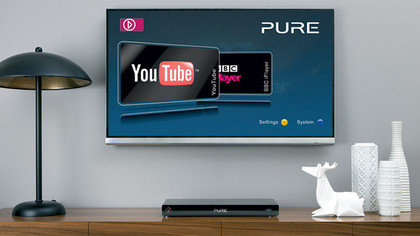Why pay-per-play could be the future of YouTube
The third largest 'country' in the world could be the most profitable

From its humble beginnings in 2005 when it attracted a paltry 30 million users in its first year, YouTube recently announced that it now has around a billion unique users each month.
The video sharing site, owned by Google since 2006, claims that nearly one out of every two people using the internet visits YouTube, and that all of the top 100 global brands have an advertising campaign on YouTube.
It's clearly in a buoyant mood, proclaiming in a blog post that, "If YouTube were a country, we'd be the third largest in the world after China and India." And so it follows that the State of YouTube could soon ask netizens to start paying a tax.
YouTube's use of channels goes back some time. Many catch-up TV services, celebrities, comedians and musicians have their own channels, and there are plans to make some - and only some - of these channels subscription-based.
If it works, it's not a huge leap to a time when YouTube is a place to go to watch a pay-for-view live sports event, rent movies (there are plans to do just that) or delve into the on-demand libraries of local, national and even global broadcasters. In short, YouTube could become the dominant curator and provider of video and TV.
It's no wonder TV networks are getting nervous, with advertising budgets bound to flow towards YouTube if it keeps growing, though some existing niche TV channels might do better out of internet TV/YouTube broadcasting than the current model.
As for Apple's much-talked about iTV, they had better get on with it. At the vanguard of new attitudes to TV consumption is a generation growing up in an era where smartphones are ubiquitous, and where tablet ownership is doubling in the UK every few months. Ask anyone under 20 to play you their favourite TV programme - or even song - and it's likely that YouTube will be the source.
Get daily insight, inspiration and deals in your inbox
Sign up for breaking news, reviews, opinion, top tech deals, and more.
Most studio recordings on YouTube are of pretty poor quality, but there are heaps of live versions, alternate takes and lost demos or TV spots. "Typically, most record labels are happy to allow the artists' work to be on YouTube, that's how they don't get removed," says Andrew Hill, who operates Crack In The Road, one of the fastest growing music and arts blogs in the UK that relies heavily on YouTube links.
"The audience there is huge and there are few better sites for getting your music out to a wide group of listeners than on YouTube. Either that, or the artist is uploading the music themselves directly to YouTube… it's essentially what MTV was in the 90s."
YouTube shouldn't get too big for its boots, though. A study by Socialbakers revealed that although people click on YouTube links in Facebook in equal measure to elsewhere, it's on the social networking platform that those videos are most commented on. YouTube might be a neat distribution model, but it's not the most interactive.
YouTube in your living room
That shouldn't bother broadcasters and operators, for whom YouTube's ambitions could prove a direct threat, but with YouTube apps on smart TVs and games consoles, the ecosystem is already in place.

The success of Netflix, Lovefilm Instant and Acetrax in the UK has gotten people used to watching TV and films delivered over the internet. This sector was once called 'over the top' services, but increasingly YouTube is a core service alongside linear TV channels.
A recent study by Parks Associates found that half of US households want a YouTube on-demand feature with their TV package - something Virgin Media TiVo and Freesat viewers got in the UK last month through the provision of a dedicated, numbered channel.
Jamie is a freelance tech, travel and space journalist based in the UK. He’s been writing regularly for Techradar since it was launched in 2008 and also writes regularly for Forbes, The Telegraph, the South China Morning Post, Sky & Telescope and the Sky At Night magazine as well as other Future titles T3, Digital Camera World, All About Space and Space.com. He also edits two of his own websites, TravGear.com and WhenIsTheNextEclipse.com that reflect his obsession with travel gear and solar eclipse travel. He is the author of A Stargazing Program For Beginners (Springer, 2015),
